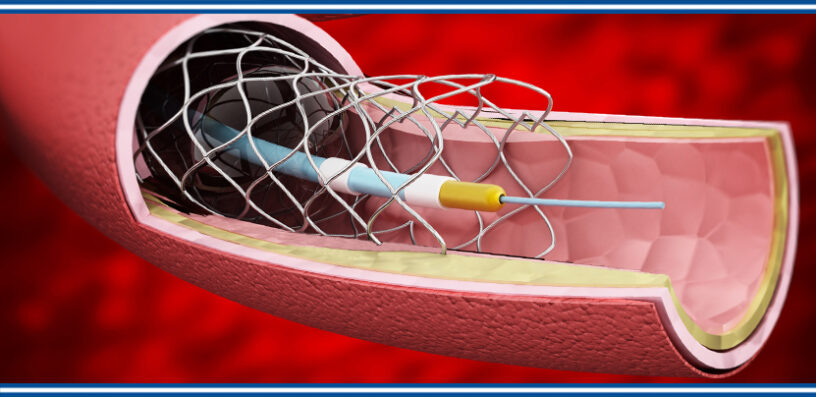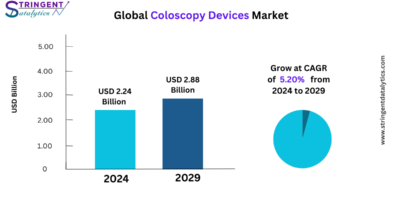Interventional Cardiology Devices Market size was valued at USD 12.91 billion in 2022 and is anticipated to grow at a compound annual growth rate (CAGR) of 7.2% from 2023 to 2030.
The Interventional Cardiology Devices Market has witnessed substantial growth in recent years, driven by factors such as the increasing prevalence of cardiovascular diseases, technological advancements in interventional cardiology procedures, and growing demand for minimally invasive treatments. Interventional cardiology devices are used in the diagnosis and treatment of various heart conditions, including coronary artery disease, structural heart defects, and peripheral artery disease.
Key segments within the interventional cardiology devices market include:
- Coronary Intervention Devices:
- Coronary Stents: These devices are used to open narrowed or blocked coronary arteries and restore blood flow to the heart. They can be bare-metal stents, drug-eluting stents, or bioresorbable stents.
- Angioplasty Balloons: Balloon catheters are used in percutaneous transluminal coronary angioplasty (PTCA) procedures to inflate and dilate narrowed coronary arteries, often in conjunction with stent placement.
- Atherectomy Devices: These devices are used to remove plaque buildup from coronary arteries, including rotational atherectomy and laser atherectomy systems.
- Structural Heart Intervention Devices:
- Transcatheter Aortic Valve Replacement (TAVR) Devices: Used to treat aortic valve stenosis by replacing the diseased aortic valve with a transcatheter heart valve delivered via a catheter.
- Left Atrial Appendage Closure (LAAC) Devices: Used to reduce the risk of stroke in patients with atrial fibrillation by sealing off the left atrial appendage to prevent blood clots from forming.
- Transcatheter Mitral Valve Repair (TMVR) Devices: Used to treat mitral valve regurgitation by repairing or replacing the mitral valve using minimally invasive techniques.
- Peripheral Intervention Devices:
- Peripheral Stents: Similar to coronary stents, these devices are used to open narrowed or blocked arteries in the peripheral vascular system, such as the iliac, femoral, and popliteal arteries.
- Peripheral Balloon Catheters: Used in angioplasty procedures to treat peripheral artery disease by dilating narrowed blood vessels in the legs, arms, or other parts of the body.
- Peripheral Atherectomy Devices: Similar to coronary atherectomy devices, these devices are used to remove plaque from peripheral arteries to improve blood flow.
- Electrophysiology (EP) Devices:
- Implantable Cardioverter Defibrillators (ICDs): Devices implanted in the chest to monitor heart rhythms and deliver electrical shocks to treat life-threatening arrhythmias.
- Cardiac Resynchronization Therapy (CRT) Devices: Used to treat heart failure by coordinating the contractions of the heart’s ventricles to improve pumping efficiency.
- Electrophysiology Ablation Catheters: Used to treat arrhythmias by delivering radiofrequency or cryotherapy energy to create scar tissue that interrupts abnormal electrical signals in the heart.
- Diagnostic and Imaging Devices:
- Intravascular Ultrasound (IVUS): Used to visualize the inside of coronary arteries and guide interventions by providing high-resolution images of plaque buildup and vessel anatomy.
- Fractional Flow Reserve (FFR) Devices: Used to assess the severity of coronary artery blockages and guide treatment decisions by measuring blood pressure differences across narrowed segments of the coronary arteries.
Market Drivers and Trends:
- Rising Prevalence of Cardiovascular Diseases: The increasing burden of cardiovascular diseases, including coronary artery disease, heart failure, and arrhythmias, is driving the demand for interventional cardiology devices.
- Technological Advancements: Innovations such as bioresorbable stents, next-generation TAVR devices, and advanced imaging technologies are enhancing the safety, efficacy, and procedural outcomes of interventional cardiology procedures.
- Shift Towards Minimally Invasive Treatments: Patients and healthcare providers are increasingly opting for minimally invasive interventions that offer faster recovery times, reduced hospital stays, and fewer complications compared to traditional open-heart surgeries.
- Growing Aging Population: The aging global population is at a higher risk of developing cardiovascular diseases, fueling demand for interventional cardiology procedures and devices.
Challenges:
- Cost Containment: The high cost of interventional cardiology procedures and devices can pose challenges for patients, healthcare providers, and payers, particularly in resource-constrained settings.
- Regulatory Hurdles: Stringent regulatory requirements and lengthy approval processes for new devices can delay market entry and increase development costs for manufacturers.
- Competitive Landscape: The interventional cardiology devices market is highly competitive, with numerous players vying for market share through product innovation, strategic partnerships, and mergers and acquisitions.
Click Here, To Get Free Sample Report https://stringentdatalytics.com/sample-request/interventional-cardiology-devices-market/14820/
Market Segmentations:
Global Interventional Cardiology Devices Market: By Company
Abbott
Acrostak
Braun Melsungen
Biosensors International
Boston Scientific Corporation
Cordis Corporation
Edwards Lifesciences Corporation
Global Interventional Cardiology Devices Market: By Type
Angioplasty Balloons
Angioplasty Stents
Catheters
Plaque Modification Devices
Hemodynamic Flow Alteration Devices
Global Interventional Cardiology Devices Market: By Application
Hospitals
Ambulatory Surgical Centers
Global Interventional Cardiology Devices Market: Regional Analysis
The regional analysis of the global Interventional Cardiology Devices market provides insights into the market’s performance across different regions of the world. The analysis is based on recent and future trends and includes market forecast for the prediction period. The countries covered in the regional analysis of the Interventional Cardiology Devices market report are as follows:
North America: The North America region includes the U.S., Canada, and Mexico. The U.S. is the largest market for Cold-chain Pharma in this region, followed by Canada and Mexico. The market growth in this region is primarily driven by the presence of key market players and the increasing demand for the product.
Europe: The Europe region includes Germany, France, U.K., Russia, Italy, Spain, Turkey, Netherlands, Switzerland, Belgium, and Rest of Europe. Germany is the largest market for Cold-chain Pharma in this region, followed by the U.K. and France. The market growth in this region is driven by the increasing demand for the product in the automotive and aerospace sectors.
Asia-Pacific: The Asia-Pacific region includes Singapore, Malaysia, Australia, Thailand, Indonesia, Philippines, China, Japan, India, South Korea, and Rest of Asia-Pacific. China is the largest market for Cold-chain Pharma in this region, followed by Japan and India. The market growth in this region is driven by the increasing adoption of the product in various end-use industries, such as automotive, aerospace, and construction.
Middle East and Africa: The Middle East and Africa region includes Saudi Arabia, U.A.E, South Africa, Egypt, Israel, and Rest of Middle East and Africa. The market growth in this region is driven by the increasing demand for the product in the aerospace and defense sectors.
South America: The South America region includes Argentina, Brazil, and Rest of South America. Brazil is the largest market for Cold-chain Pharma in this region, followed by Argentina. The market growth in this region is primarily driven by the increasing demand for the product in the automotive sector.
Click Here, To Buy Premium Report https://stringentdatalytics.com/purchase/interventional-cardiology-devices-market/14820/?license=single
Frequently Asked Questions About This Report
- How big is the Market?
- What is the Market growth?
- Which segment accounted for the largest Market share?
- Who are the key companies/players in the Market?
- What are the factors driving the Market?
- How has the Covid-19 pandemic affected the Market?
- What is the leading solution segment in the Market?
- What is the leading deployment segment in the Market?
- Which enterprise segment accounted for the largest revenue share in the Market?
About Stringent Datalytics
Stringent Datalytics offers both custom and syndicated market research reports. Custom market research reports are tailored to a specific client’s needs and requirements. These reports provide unique insights into a particular industry or market segment and can help businesses make informed decisions about their strategies and operations.
Syndicated market research reports, on the other hand, are pre-existing reports that are available for purchase by multiple clients. These reports are often produced on a regular basis, such as annually or quarterly, and cover a broad range of industries and market segments. Syndicated reports provide clients with insights into industry trends, market sizes, and competitive landscapes. By offering both custom and syndicated reports, Stringent Datalytics can provide clients with a range of market research solutions that can be customized to their specific needs.
Contact Us
Stringent Datalytics
Contact No- +1 346 666 6655
Email Id- sales@stringentdatalytics.com




Leave a Reply